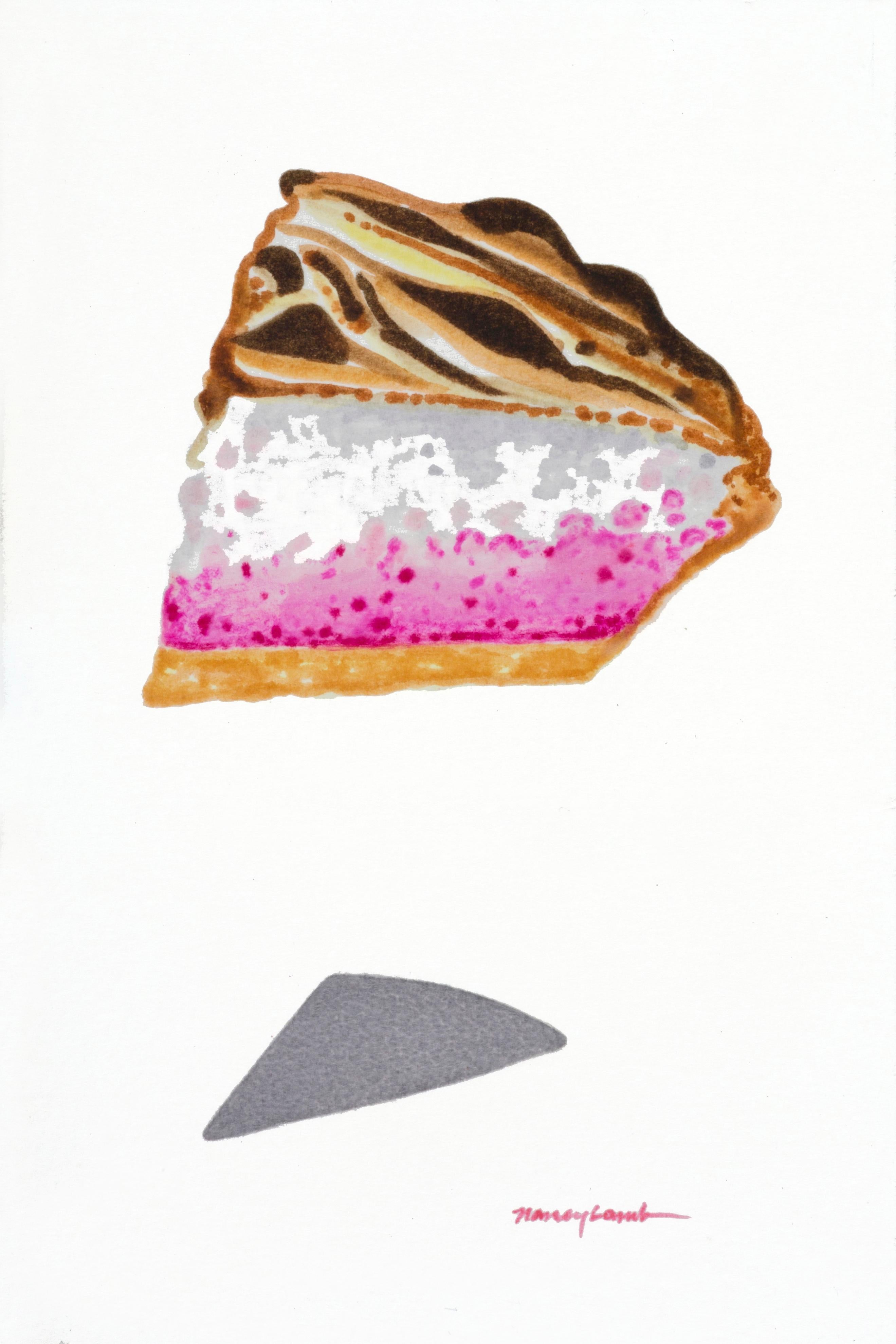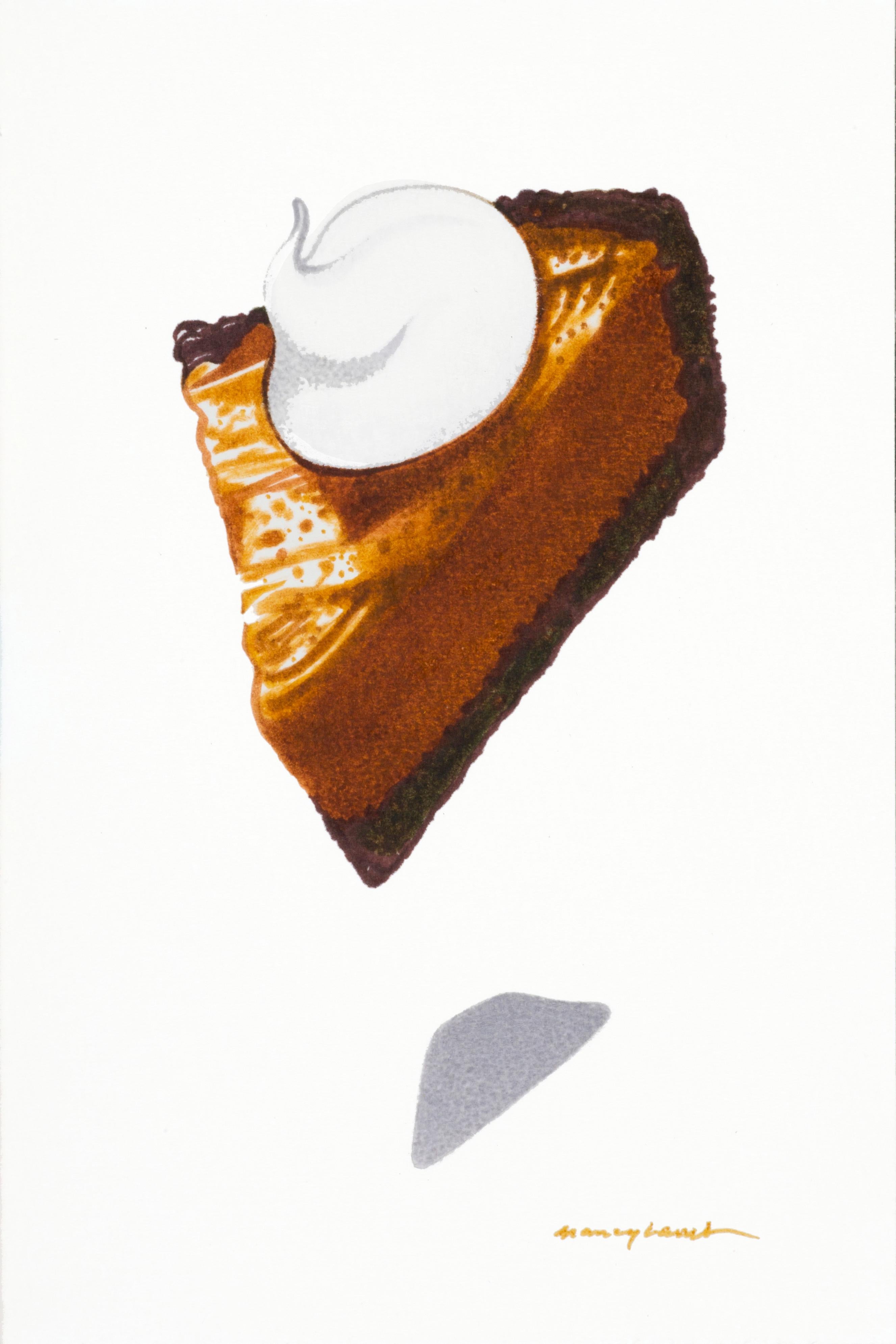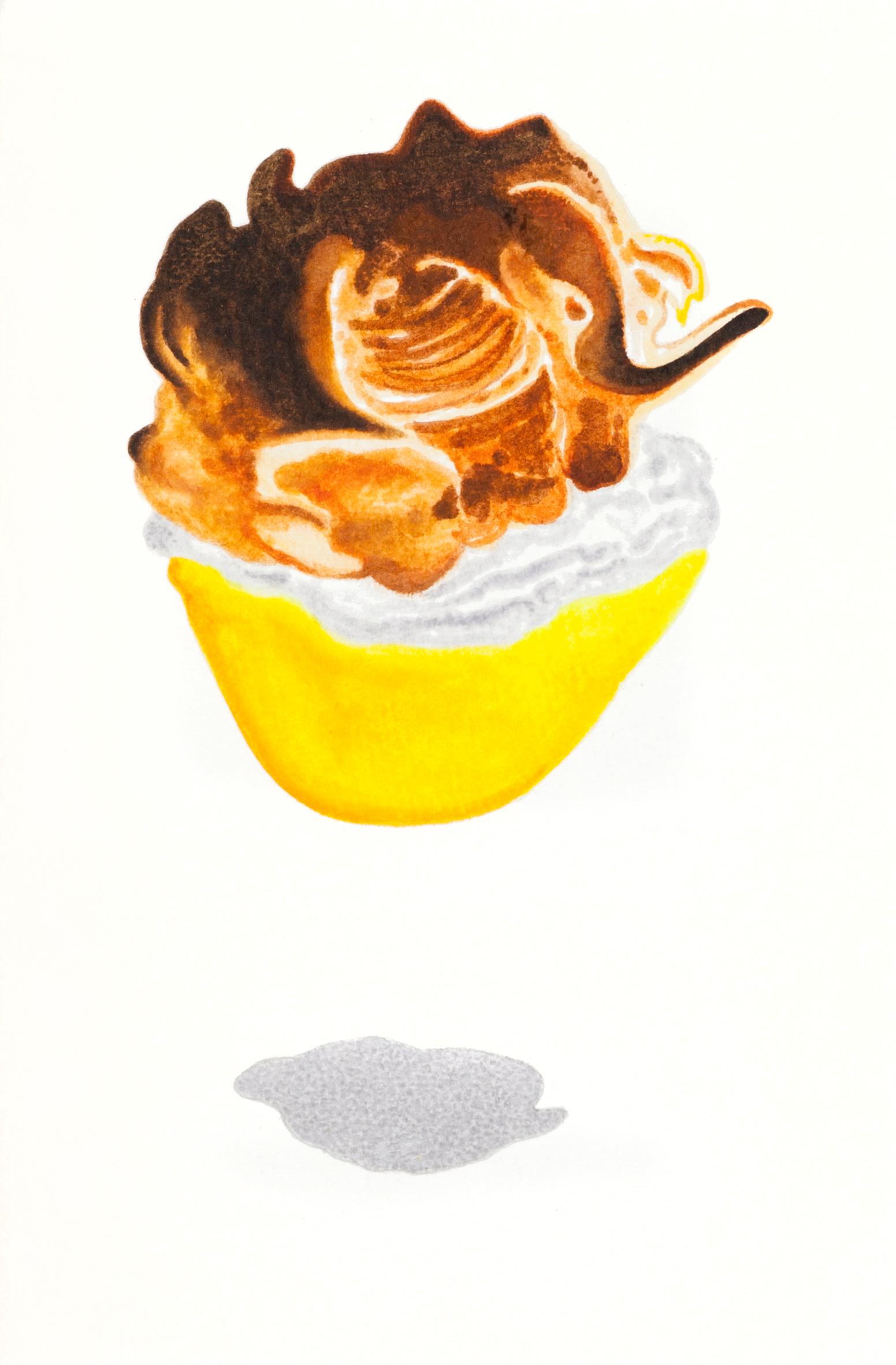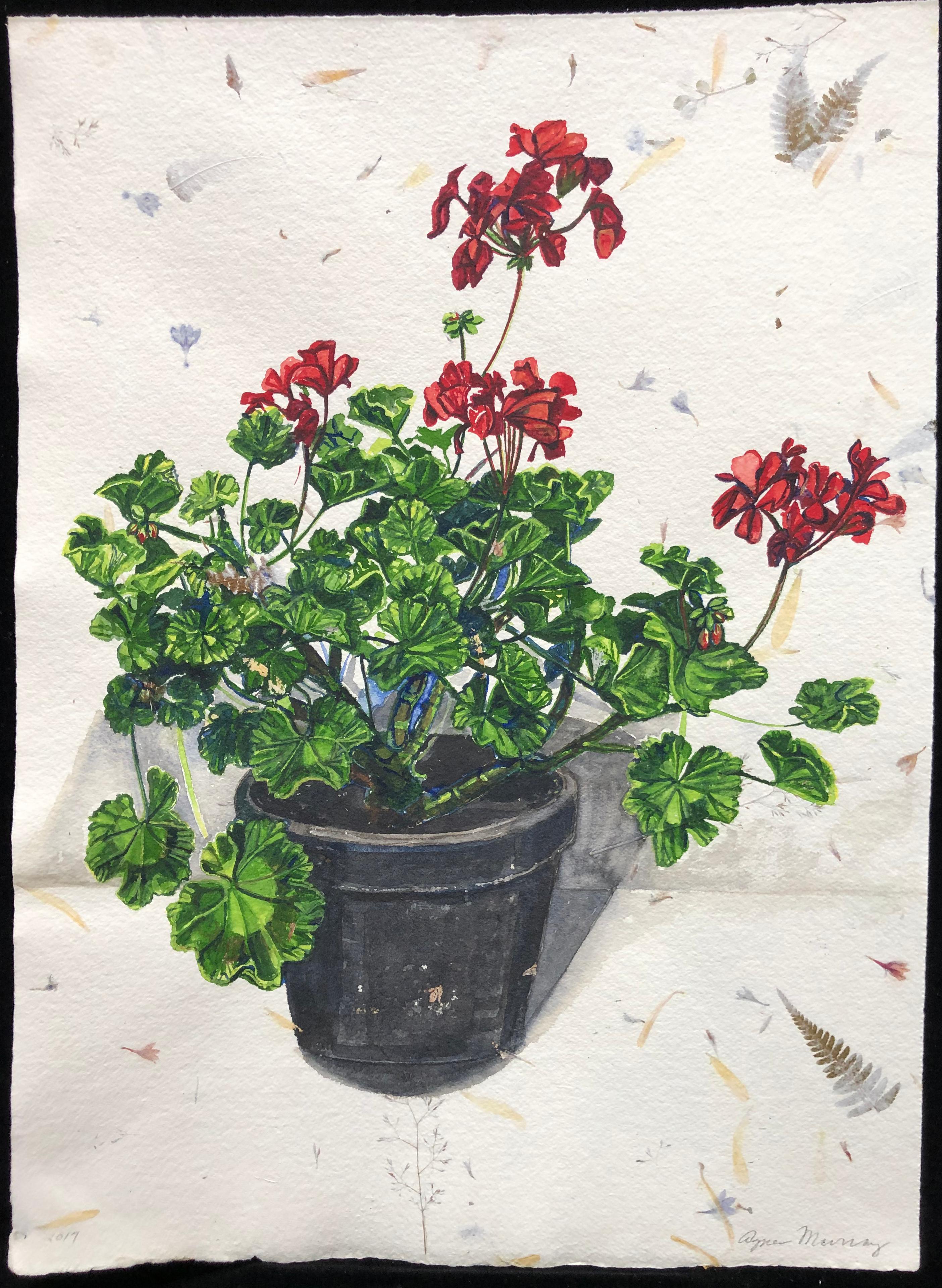Items Similar to Annual Lavatera a native of Spain
Want more images or videos?
Request additional images or videos from the seller
1 of 3
Frances Jauncey KetchumAnnual Lavatera a native of Spain1818-20
1818-20
About the Item
Signed (at lower right): FJK [partial]
- Creator:Frances Jauncey Ketchum (1800 - 1832)
- Creation Year:1818-20
- Dimensions:Height: 8.7 in (22.1 cm)Width: 6.7 in (17.02 cm)Depth: 1.5 in (3.81 cm)
- Medium:
- Movement & Style:
- Period:
- Condition:
- Gallery Location:New York, NY
- Reference Number:
About the Seller
5.0
Recognized Seller
These prestigious sellers are industry leaders and represent the highest echelon for item quality and design.
Established in 1952
1stDibs seller since 2010
32 sales on 1stDibs
Typical response time: 10 hours
Associations
Art Dealers Association of America
- ShippingRetrieving quote...Ships From: New York, NY
- Return PolicyThis item cannot be returned.
More From This SellerView All
- Bitter Quassia, a native of SurinamBy Frances Jauncey KetchumLocated in New York, NYSigned (at lower right): FJKCategory
Early 19th Century American Realist Still-life Drawings and Watercolors
MaterialsWatercolor
- Flox de Pascua-Magnolia (Tropical Trees & Plants)By Charles De Wolf BrownellLocated in New York, NYWatercolor on paperCategory
Mid-19th Century American Realist Still-life Drawings and Watercolors
MaterialsWatercolor
- African Agapanthus, or Blue Lily, a native of the CapeBy Frances Jauncey KetchumLocated in New York, NYSigned (at lower right): FJKCategory
Early 19th Century American Realist Still-life Drawings and Watercolors
MaterialsWatercolor
- Garden FlowersBy Charles DemuthLocated in New York, NYCharles Demuth was one of the most complex, talented, and deeply sensitive artists of the American modern period. Whether he was painting floral still lifes, industrial landscapes, or Turkish bathhouses, art was, for Demuth, fraught with personal meaning. A fixture of the vanguard art scene in New York, Demuth navigated the currents of Modernism, producing some of the most exquisite watercolors and original oil paintings in twentieth-century American art. Demuth was born in Lancaster, Pennsylvania, the only child of a well-to-do family. He had an awkward and introverted childhood shaped by a childhood illness, Perthes, a disease of the hip that not only left him permanently lame, but, as part of the “cure,” bedridden for two years in the care of his mother. This long period of incapacitation had a deep impact on Demuth, who came to see himself as an invalid, an outsider who was different from everyone else. It was perhaps during this period of indoor confinement that his keen interest in art developed. Several relatives on his father’s side had been amateur artists, and, following his convalescence, his mother encouraged his artistic pursuits by sending him to a local painter for instruction. The majority of his early pictures are of flowers, a subject for which Demuth maintained a lifelong passion. Following high school, Demuth enrolled at the Drexel Institute of Art in Philadelphia, a school renowned for its commercial arts program. He advanced through the program rapidly, and, in 1905, at the encouragement of his instructors, he began taking courses at the Pennsylvania Academy of the Fine Arts. The two leading teachers then at the Academy were William Merritt Chase and Thomas Anshutz. Anshutz, himself a former student of Thomas Eakins, was well liked by his students, and is best known as the teacher of Robert Henri, John Sloan, and several of the other artists of the Ashcan School. Demuth, too, adopted a similar idiom, working in a controlled, realistic manner while at the Academy, where he remained until 1910. In 1907, Demuth made his first trip to Europe, staying in Paris. He spent time on the periphery of the art scene composed of the numerous American artists there, including John Marin and Edward Steichen. He returned to Philadelphia five months later, and immediately resumed courses at the Academy. Despite his introduction to advanced modern styles in Europe, Demuth’s work of this period retains the academic style he practiced before the trip. It wasn’t until he had summered at New Hope, Pennsylvania, in 1908 and 1911, that his style began to evolve. New Hope was a prominent American Impressionist art colony whose members were largely affiliated with the Pennsylvania Academy. Demuth dropped the conservative tone of his style and adopted a freer and more colorful palette. Although he remained based in Philadelphia, Demuth frequently went to New York during this period. Many of the same American artists of the Parisian art scene Demuth had encountered on his earlier European trip now formed the nucleus of New York’s avant-garde, which centered around Alfred Stieglitz’s 291 gallery. It wasn’t long before Demuth began to apply modernist-inspired strategies to his work. He was particularly influenced by the watercolor work of John Marin, also a former student of Anshutz, whose bold use of color in the medium Demuth freely adapted into looser washes of color. In 1912, Demuth again left for Paris, this time studying in the Académie Moderne, Académie Colorossi, and Académie Julian. In Paris Demuth met the American modernist Marsden Hartley. Hartley, a principal figure in the expatriate art circle, acted as a mentor to Demuth, and introduced him to the wide array of modern styles currently practiced in Europe. Hartley also introduced Demuth to many of the members of the Parisian avant-garde, including Gertrude Stein. Demuth was an aspiring writer, and he spent many hours in conversation with Stein. He wrote extensively during this period, and published two works shortly after his return to America. He also developed an interest in illustrating scenes from literary texts. From 1914 to 1919, Demuth produced a series of watercolors of scenes from books such as Emile Zola’s Nana and Henry James’s The Turn of the Screw. Upon his return to America, Demuth settled in New York. In 1914, Demuth had his first one-man show at Charles Daniel’s gallery, which promoted emerging modern American artists, including Man Ray, Rockwell Kent, Yasuo Kuniyoshi, Stuart Davis, and Max Weber. Demuth drew closer to the artistic vanguard in New York, becoming friends with many in the Stieglitz and Daniel circles, including Georgia O’Keeffe, Marcel Duchamp, Carl Van Vechten, and Edward Fiske. New York’s cosmopolitan atmosphere and active nightlife appealed greatly to Demuth. In a sketchy style well suited to watercolor, he painted many vaudeville and circus themes, as well as nightclub, café, and bathhouse scenes. Often with Duchamp, Demuth took part in an urban subculture replete with nightclubs, bars, drugs, and sexual permissiveness, which, for a homosexual artist like himself, allowed room for previously unattainable personal expression. Demuth’s pictures of sailors, bathhouses, and circus performers embody a sensual and sexual undercurrent, expressing the artist’s sense of comfort and belonging in the bohemian subculture of New York. Simultaneously, Demuth deepened his interest in floral pictures, painting these almost exclusively in watercolor. His style evolved from the broad color washes of his earlier pictures to more spare, flattened, and sinuous compositions, inspired by the drawings of Aubrey Beardsley and other artists of the Aesthetic Movement. Demuth’s flower watercolors are moody and atmospheric, sensuous and elegant, introspective and yet full of expressive power. Moreover they are beautiful, and are unequivocally among the finest still lifes in American art. Despite numerous subsequent artistic undertakings that led him in a variety of directions, Demuth never stopped painting flower pictures, ultimately adding fruits and other still-life objects to his repertoire. In 1916, Demuth began to develop a style later known as Precisionism, a form of landscape painting infused with Cubism, in which space is divided into precisely drawn geometric regions of color. Demuth first began to paint the landscape in an appropriated Cubist mode while on a trip with Hartley to Bermuda. In these early landscapes, in which the curvilinear forms of trees intersect the geometrically articulated architectural forms, Demuth explored ideas that shaped the future development of modernism in America. The full realization of Demuth’s explorations came after his return to America in 1917, when he turned his attention to industrial subjects. These works derive from a “machine aesthetic,” espoused by New York artists such as Francis Picabia, Joseph Stella, Albert Gleizes, and Duchamp, by which artists viewed machines as embodying mystical, almost religious significance as symbols of the modern world. Rather than painting the skyscrapers and bridges of New York as did most of his like-minded contemporaries, Demuth returned to his home town of Lancaster, where he painted factories and warehouses in a Precisionist idiom. The titles for these pictures are often contain literary references, which serve as clues for the viewer to aid in the decoding of the artist’s meaning. In 1923, Demuth planned a series of abstract “poster portraits” of his friends and contemporaries in the New York art and literary scene. In these “portraits,” Demuth combined text and symbolic elements to evoke the essential nature of his sitters’ distinguishing characteristics. In this fashion, he painted portraits of such artists as Georgia O’Keeffe, John Marin, and Arthur Dove. His most famous poster portrait, I Saw the Figure 5 in Gold...Category
20th Century American Modern Still-life Drawings and Watercolors
MaterialsPaper, Watercolor
- Stiff Life of Peaches, Plums, and GrapesBy William HoughLocated in New York, NYThe Victorian still-life painter William Hough began his career working in Coventry and later moved to London. He exhibited flower and fruit still lifes at the Royal Academy and at t...Category
Late 19th Century Realist Still-life Drawings and Watercolors
MaterialsPaper, Watercolor
- Still LifeLocated in New York, NYSigned (at lower right): Bailey 1977Category
Late 20th Century Contemporary Still-life Drawings and Watercolors
MaterialsPaper, Pencil
You May Also Like
- Small Contemporary American Food Watercolor of Bubblegum Pie Dessert for KitchenBy Nancy LambLocated in Fort Worth, TXNancy Lamb, Bubblegum Pie, 2020, Watercolor on Paper, 5.5 x 3.5" Contemporary American Still Life of Bubblegum Pie, Dessert Treat. This fantastic zero-ca...Category
2010s American Realist Still-life Paintings
MaterialsWatercolor, Paper, Oil, Acrylic
- Contemporary American Still Life of Hershey's Kiss Cake, Chocolate Dessert TreatBy Nancy LambLocated in Fort Worth, TXNancy Lamb, Kiss Cake, 2020, Watercolor on Paper, 5.5 x 3.5." Contemporary American Still Life of Hershey's Kiss Cake, Chocolate Dessert Treat. This fan...Category
21st Century and Contemporary American Realist Still-life Drawings and W...
MaterialsWatercolor, Paint, Paper
- Small Contemporary American Carmel Cheesecake Dessert Still LifeBy Nancy LambLocated in Fort Worth, TXNancy Lamb, Caramel Cheesecake, 2020, Watercolor on Paper, 5.5 x 3.5" This Nancy Lamb Carmel Cheesecake is the guilt-free, calorie-free way to have your c...Category
2010s American Realist Still-life Paintings
MaterialsWatercolor
- Small Contemporary Watercolor Cream Puff Dessert on Paper ideal for Kitchen/BarBy Nancy LambLocated in Fort Worth, TXNancy Lamb, Cream Pop-Up, 2020, Watercolor on Paper, 5.5 x 3.5" Contemporary American Still Life of Cream Puff, Dessert Treat. This fantastic zero-calorie, fat-free, watercolor i...Category
2010s American Realist Still-life Paintings
MaterialsWatercolor
- Pelargonium #4, Floral, Richard de Bas paper, realism, botanicalBy Agnes MurrayLocated in Brooklyn, NYWatercolor on handmade Richard de Bas "fleurs" paper Agnes Murray has an extensive exhibition history and she is represented in both private and public collections. Ms. Murray is a p...Category
2010s American Realist Still-life Drawings and Watercolors
MaterialsWatercolor, Archival Paper, Handmade Paper
- Pelargonium #3, Floral, Richard de Bas paper, realism, botanicalBy Agnes MurrayLocated in Brooklyn, NYWatercolor on handmade Richard de Bas "fleurs" paper Agnes Murray has an extensive exhibition history and she is represented in both private and public collections. Ms. Murray is a p...Category
2010s American Realist Still-life Drawings and Watercolors
MaterialsWatercolor, Archival Paper, Handmade Paper
Recently Viewed
View AllMore Ways To Browse
Painting Of A Native American
Framed Native American
Antique Native American Painting
Early 20 Century Spanish Paintings
Capucine Safir
Robert Petersen
Alex Katz Spring Flowers
Craig Rub
David Dawson
Tom Coffin
Welsh Bed
Margot Glass On Sale
John D Herz
Vintage Hydrangea Drawing
Aubusson 16e
Tiffany Lamp Drawing
Samantha Sung
Moody 363





